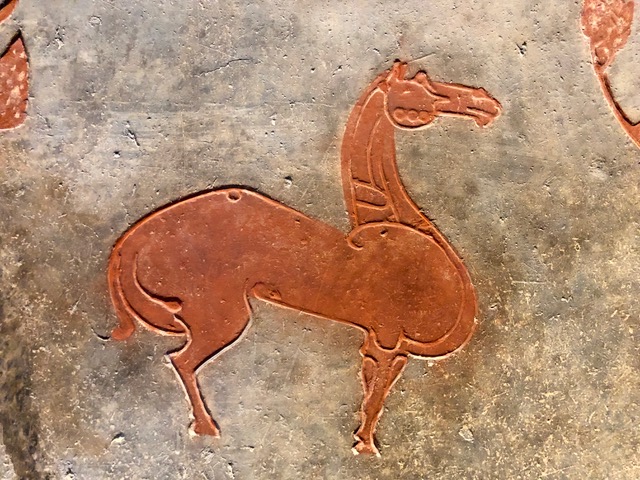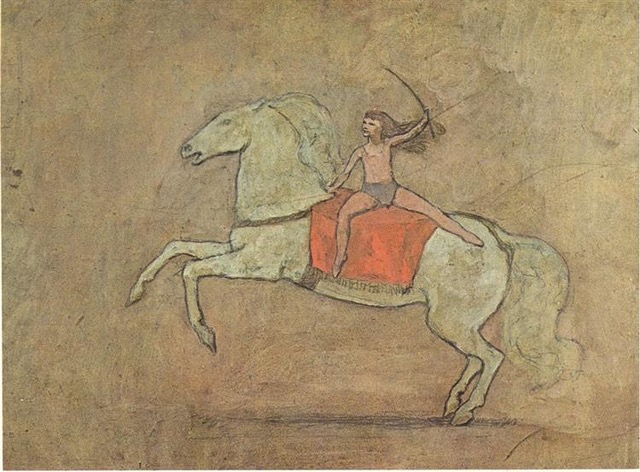“Bisonte Magdaleniense polícromo” Cave of Altamira
Here is a summary of the recent Section for Literary Arts & Humanities meeting of the local group in Fair Oaks, CA. This meeting occurred on June 19, 2021 via Zoom.
“Time past and time future
What might have been and what has been
Point to one end, which is always present.”
— T. S. Eliot, from The Four Quartets
Last night at the meeting we spent the evening in discussion of James Joyce and Modernism. We started the evening with a quotation by Owen Barfield.
“We are sometimes asked to say in a few words what Anthroposophy is. It is of course impossible. But let us in this context say that the kernel of Anthroposophy is the concept of man’s self-consciousness as a process in time – with all that this implies.”
— Owen Barfield, from the essay “The Time-Philosophy of Rudolf Steiner” in the collection Romanticism Comes of Age
From here, we discussed the study and writing of literature as a practice of Spirit Remembering. We referenced James Joyce as a primary example, but I began our discussion with Novalis and the novel Heinrich von Ofterdingen. While Novalis lived a good century prior to the High Modernist era of Joyce and Eliot, Rilke and Steiner — Novalis nonetheless anticipated their themes and concerns. Just as Joyce in Finnegans Wake leads us into a realm of sleep and dream and death and darkness — in which language flows musically and reveals its essential nature, time and being — so too Novalis attempts to find with his writings and poetry a language adequate to the realm of the Unborn.

“Horse” Photo by Bruce Donehower
Next week we will experiment with a hybrid meeting. Friends who live close by are invited to meet on the porch overlooking the garden. I will set up cameras and microphones so that friends who live afar (or who live in Fair Oaks but who wish to stay out of the possible heat of the early evening) can Zoom into the event as usual from the comfort of home.
This meeting will be a salon in celebration of St. John’s Tide and summer solstice. I will read a brand new short work of literature — one that arises directly from our intensive weekly work together over the past fifteen months — and maybe play some music. But have no fears! The story I will read is nothing at all like anything Joyce or Novalis ever wrote! It’s an easy story.
Hint. Can you say: “Umstülpung” ?!

“Horsewoman” Pablo Picasso, 1905
Click this sentence to hear a recording of James Joyce reading from Finnegans Wake (9 minutes).
Click this sentence to hear a recording of James Joyce reading from Ulysses (4 minutes).
Edith Maryon
The Visual Arts Section is sponsoring an event on June 26 with Peter Selg on the topic of the biography of Edith Maryon, one of Rudolf Steiner’s very close collaborators. This event is a fund-raiser to support the translation of Peter Selg’s biography of Edith Maryon. For more information and a PDF, click this sentence.
________
“Well, you know or don’t you kennet or haven’t I told you every telling has a taling and that’s the he and the she of it. Look, look, the dusk is growing. My branches lofty are taking root. And my cold cher’s gone ashley. Fieluhr? Filou! What age is at? It saon is late.”
— James Joyce, Finnegans WakeHe finds the blue flower; it is Matilda, who sleeps and has the carbuncle. A little girl, their child, sits by a coffin and renews his youth. “This child is the primeval world, the close of the golden time.” Here the Christian religion is reconciled with the Heathen. The history of Orpheus, of Psyche, and others are sung.
— Novalis, Heinrich von Ofterdingen (Ludwig Tieck’s notes on the completion of the novel)
Art, Spirit, Epiphany
A Waldorf Perspective
“James Joyce, the twentieth century literary giant, had a vision of the arts. He saw the arts as consisting of both proper and improper manifestations. But he saw two kinds of improper art. This distinction between two types of improper arts is most important. One he called pornographic because it seduces one, pulls one towards it and sells itself. The other form of improper art he called didactic because it wants to teach one a lesson, whether one wants to learn it or not. It is in-your-face, avantgarde art, pushing itself on one. Didactic art is true but not pretty. Pornographic art is pretty but not true.
“The arts have this very special and serious mission of engaging us on three fronts. Pornographic (not meaning anything sexual in this case) art appeals to our will, through our feelings, while didactic art appeals to our thinking through our feelings. They are forms of art that go too far in the direction of the metabolic-limb or will experience on the one hand and too far into the nerve-sense or thinking process on the other, and don’t resonate fully within the rhythmic, feeling realm where an epiphany, as Joyce called it, in the stillness of the heart can take place—what is referred to as aesthetic arrest.”
Quoted from Journal for Rudolf Steiner/Waldorf Teachers (Produced by the Pedagogical Section in Australia and New Zealand)

